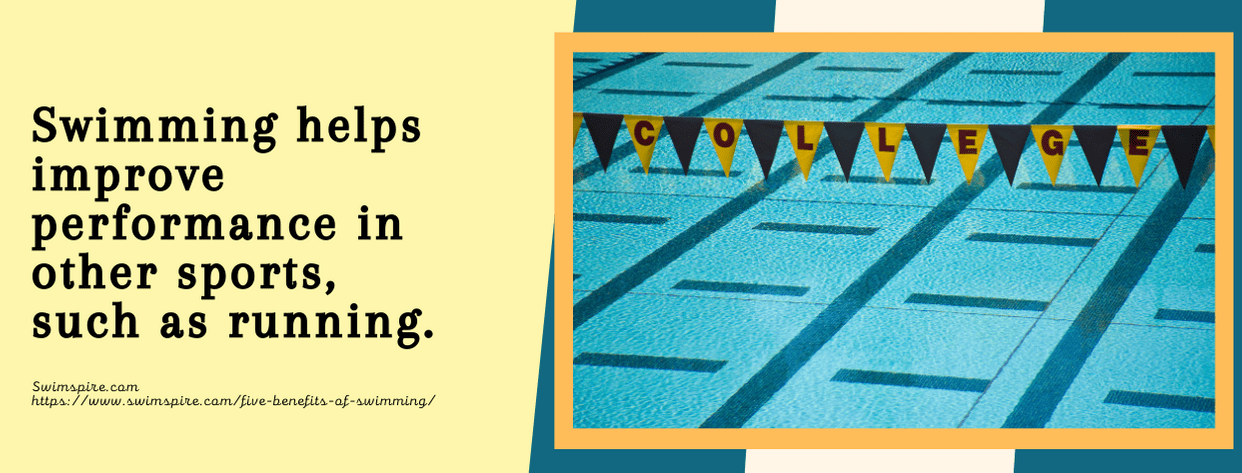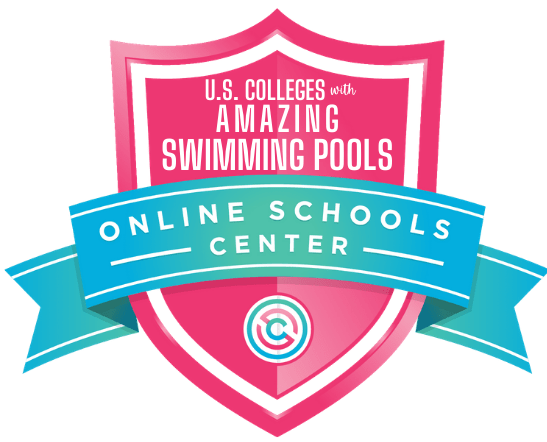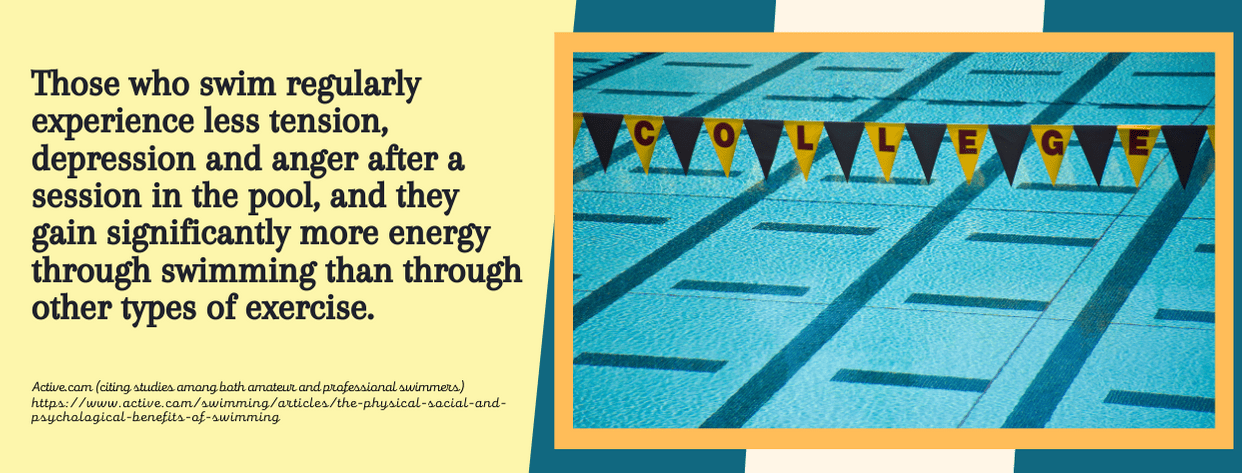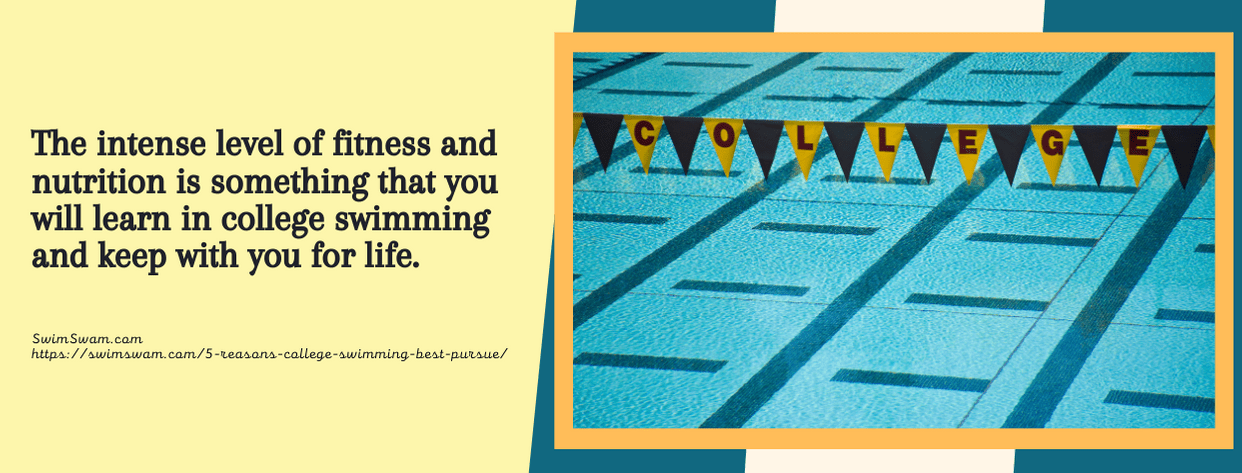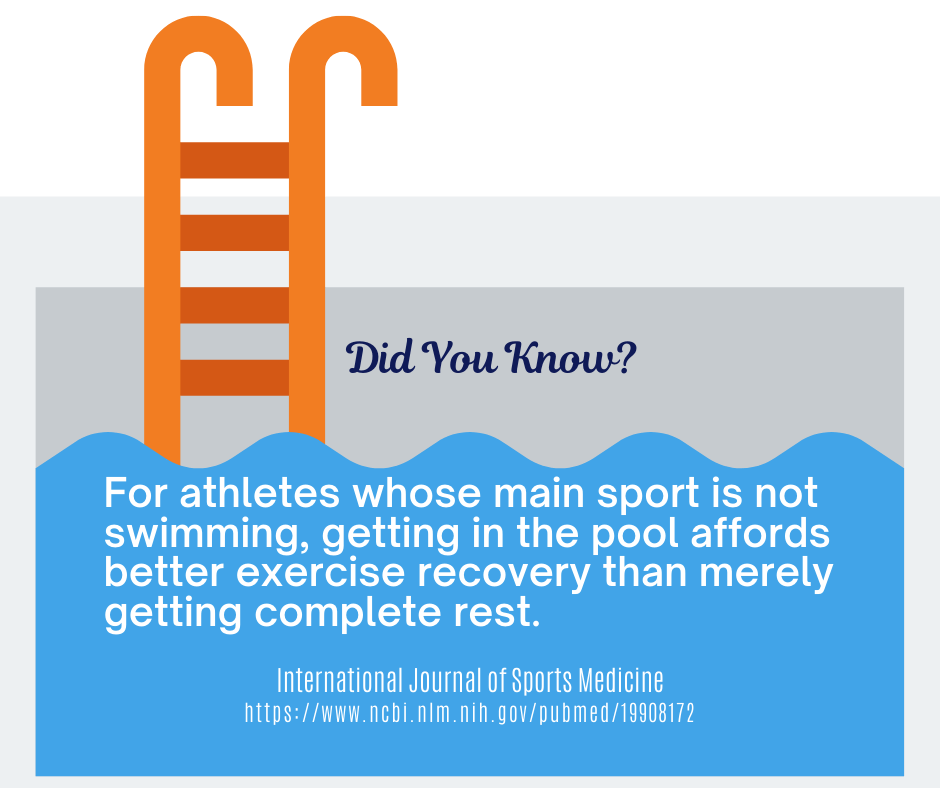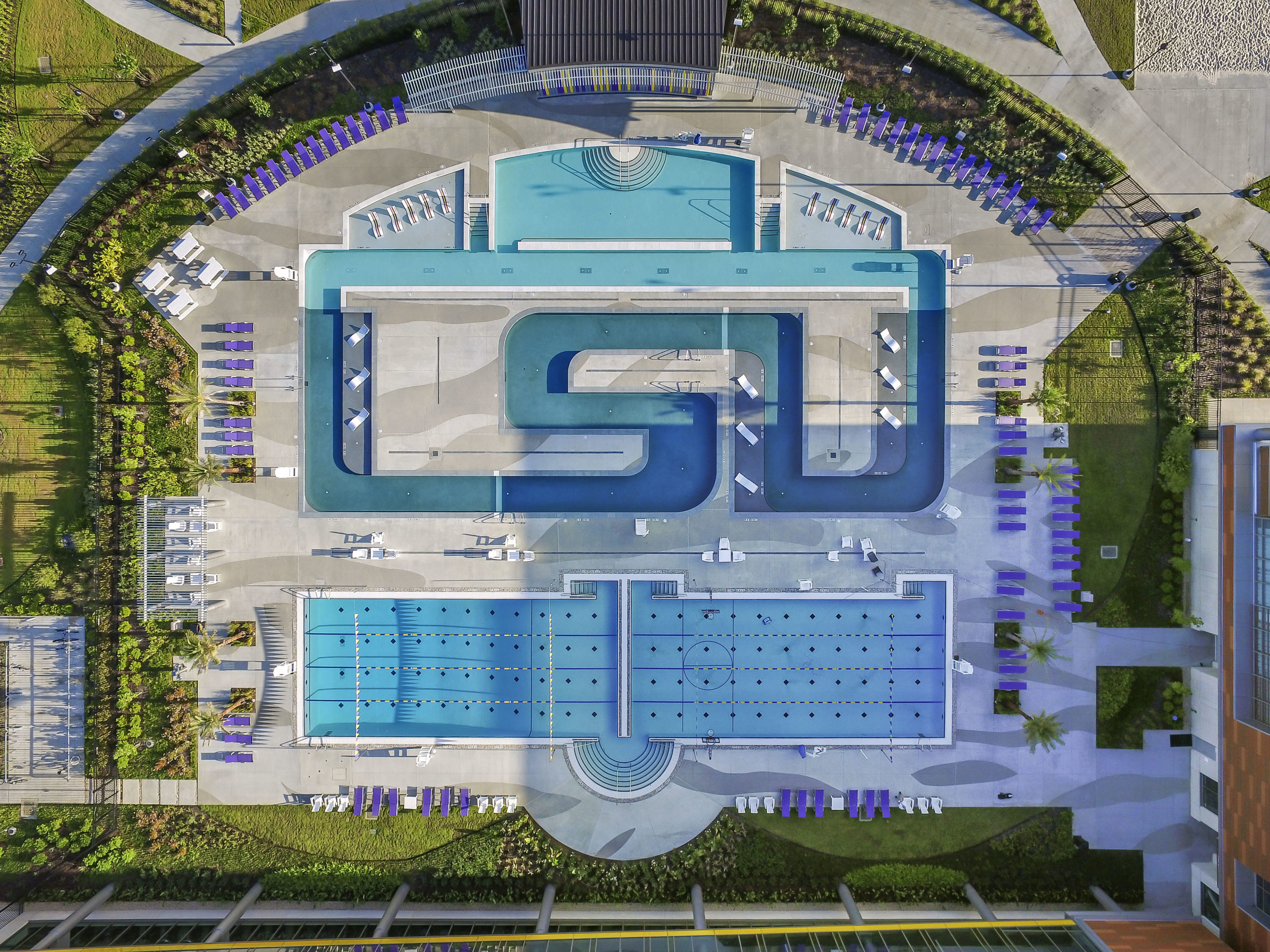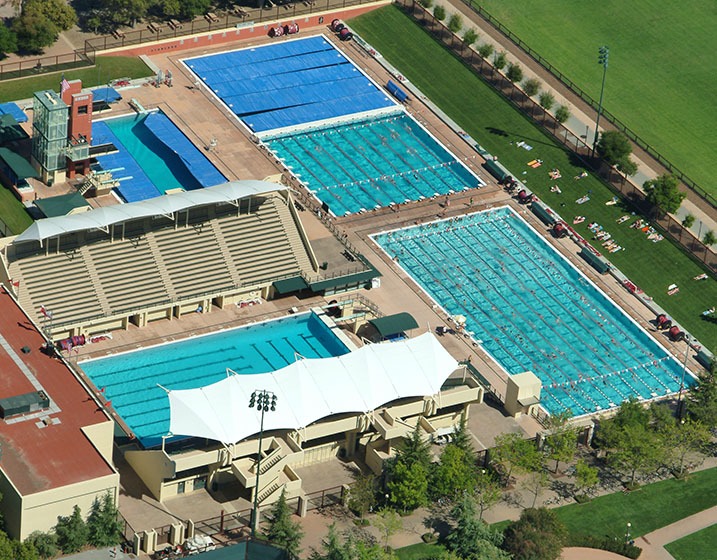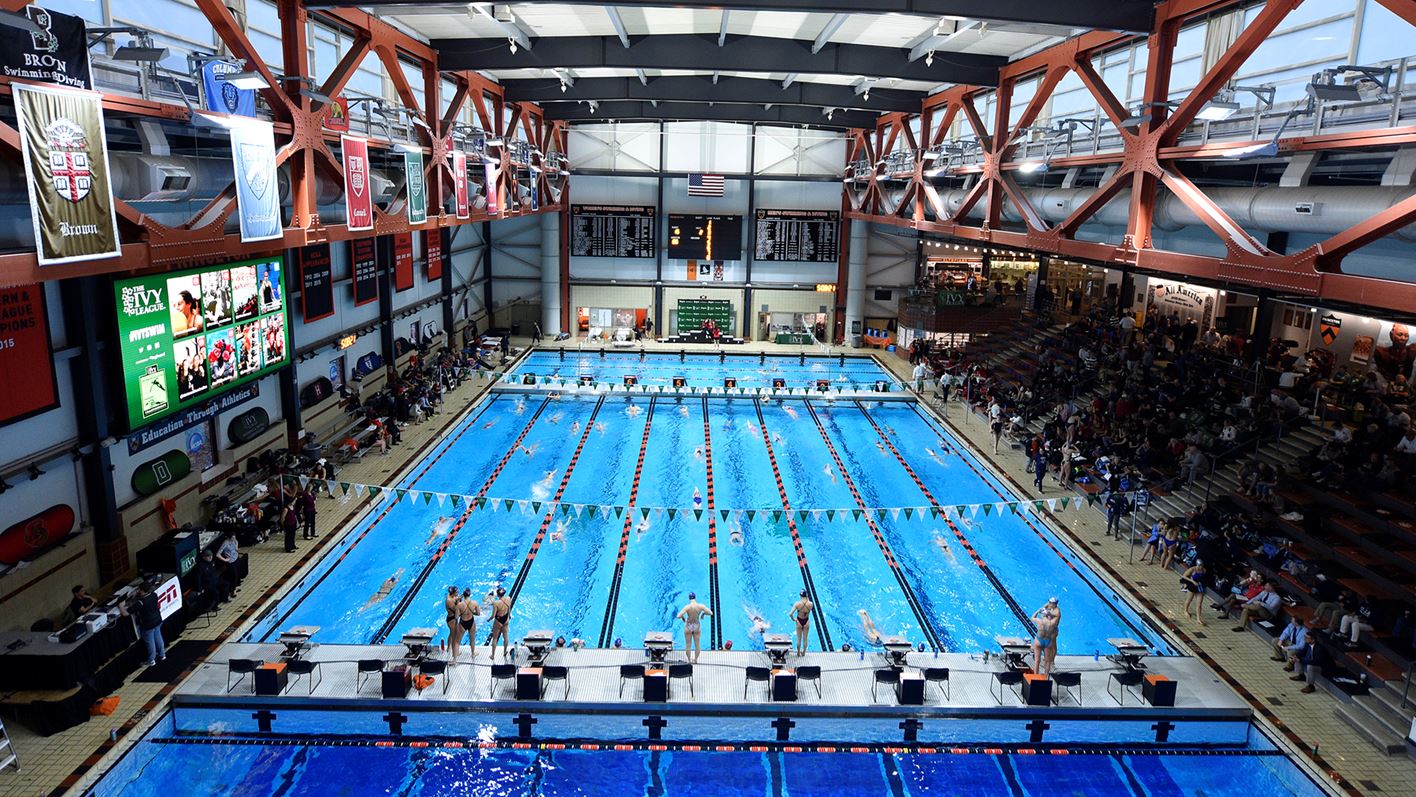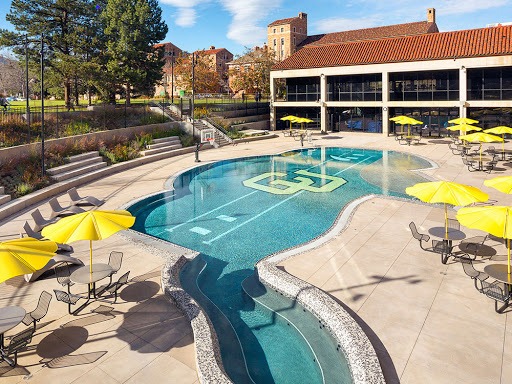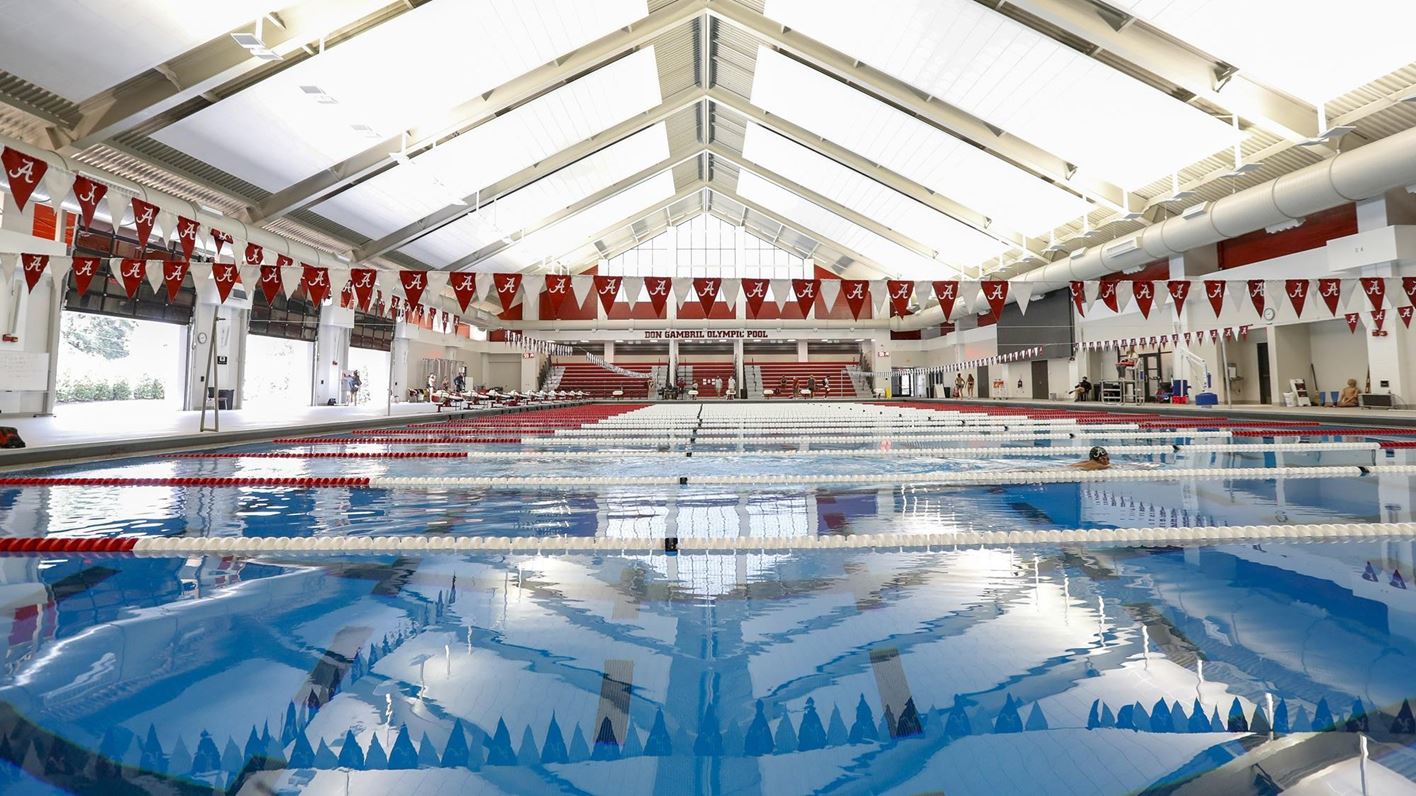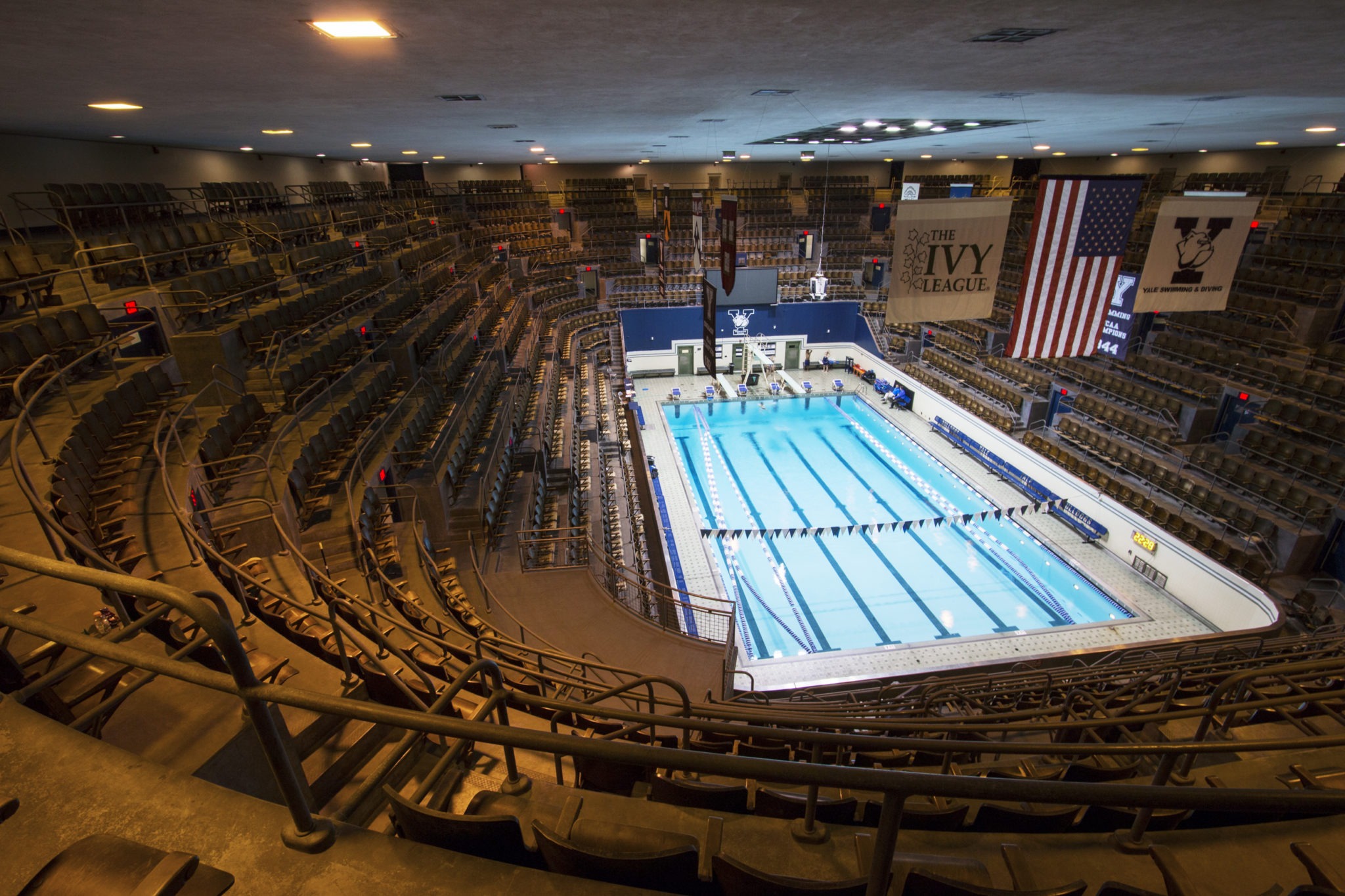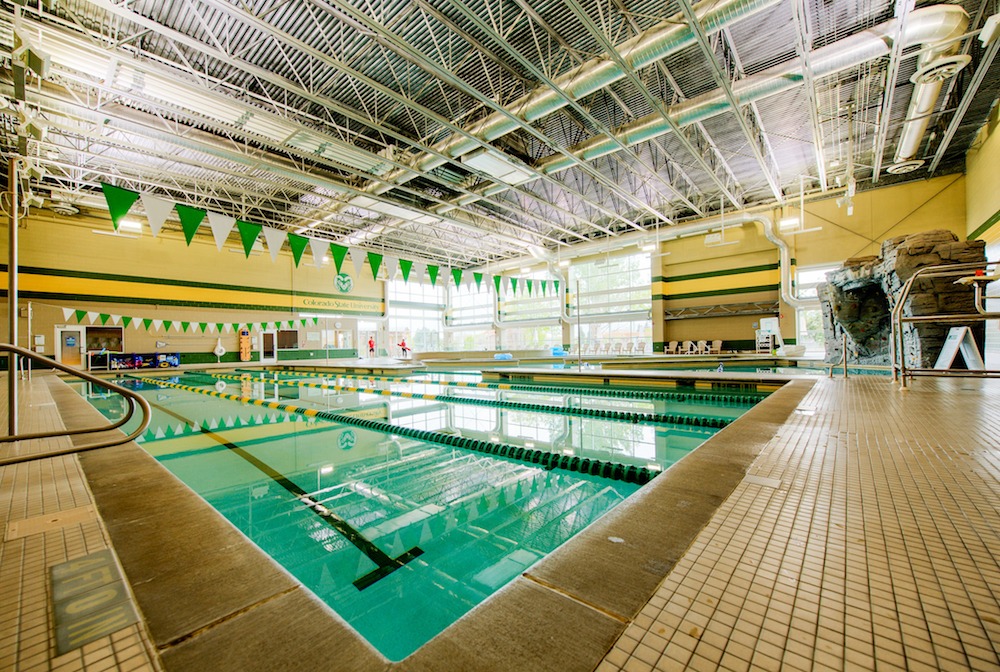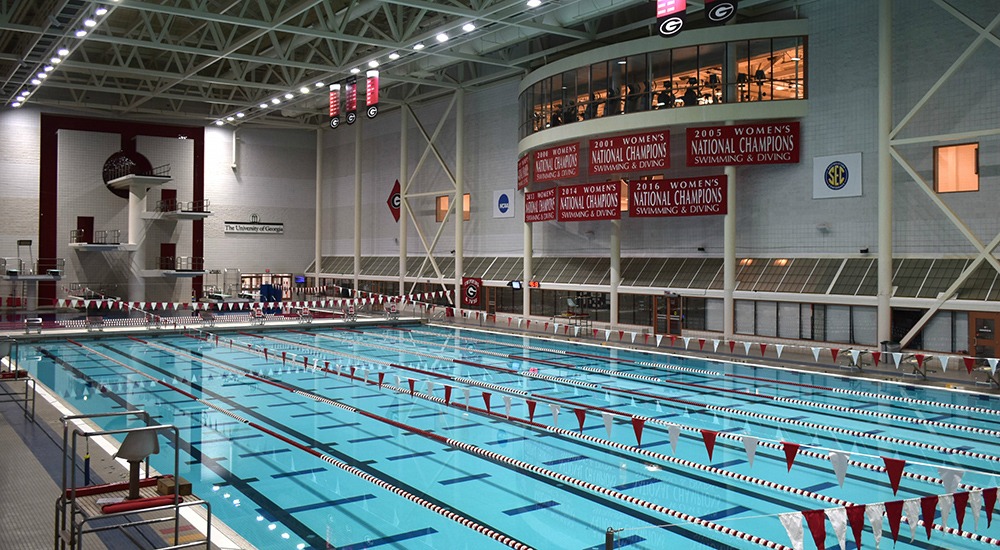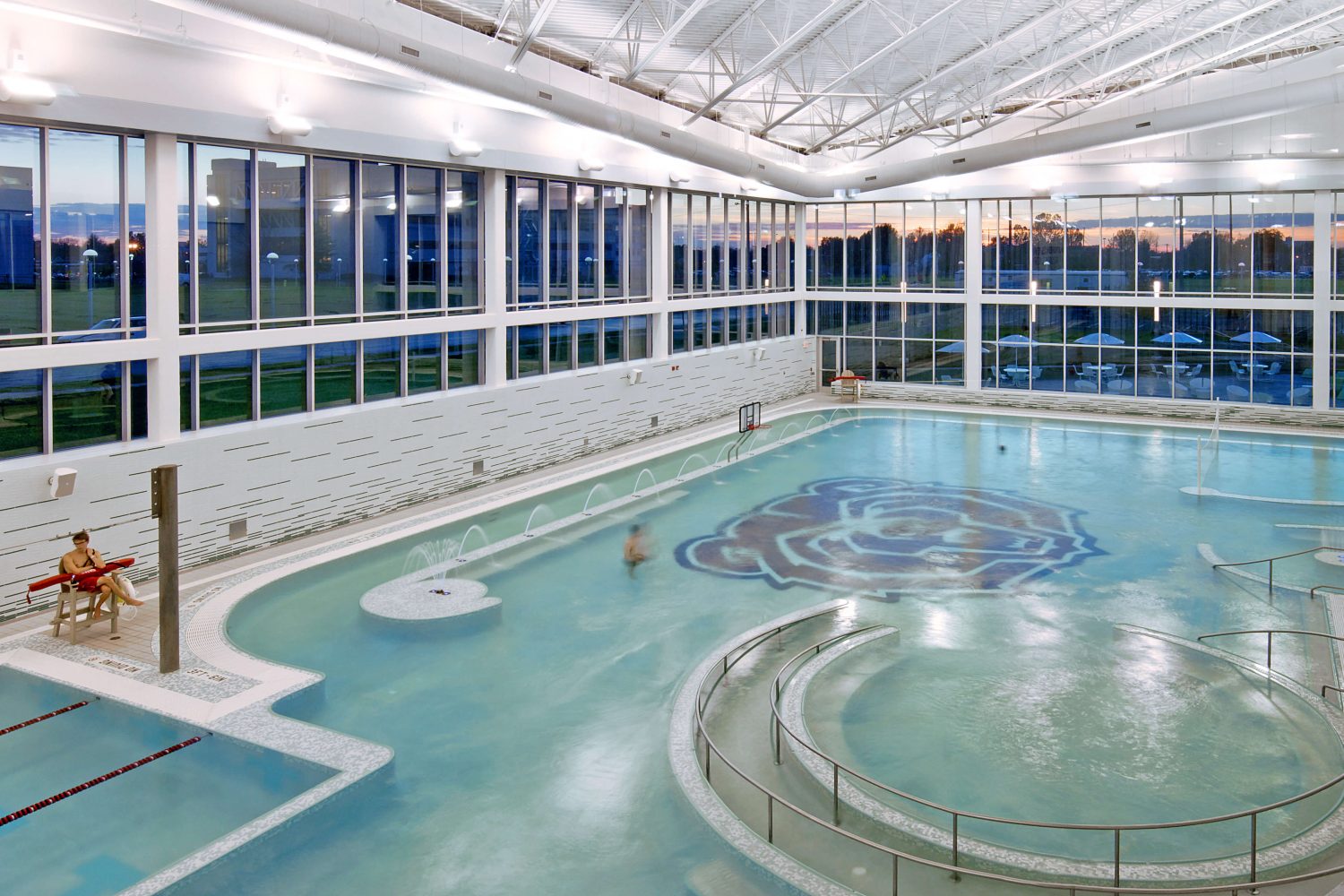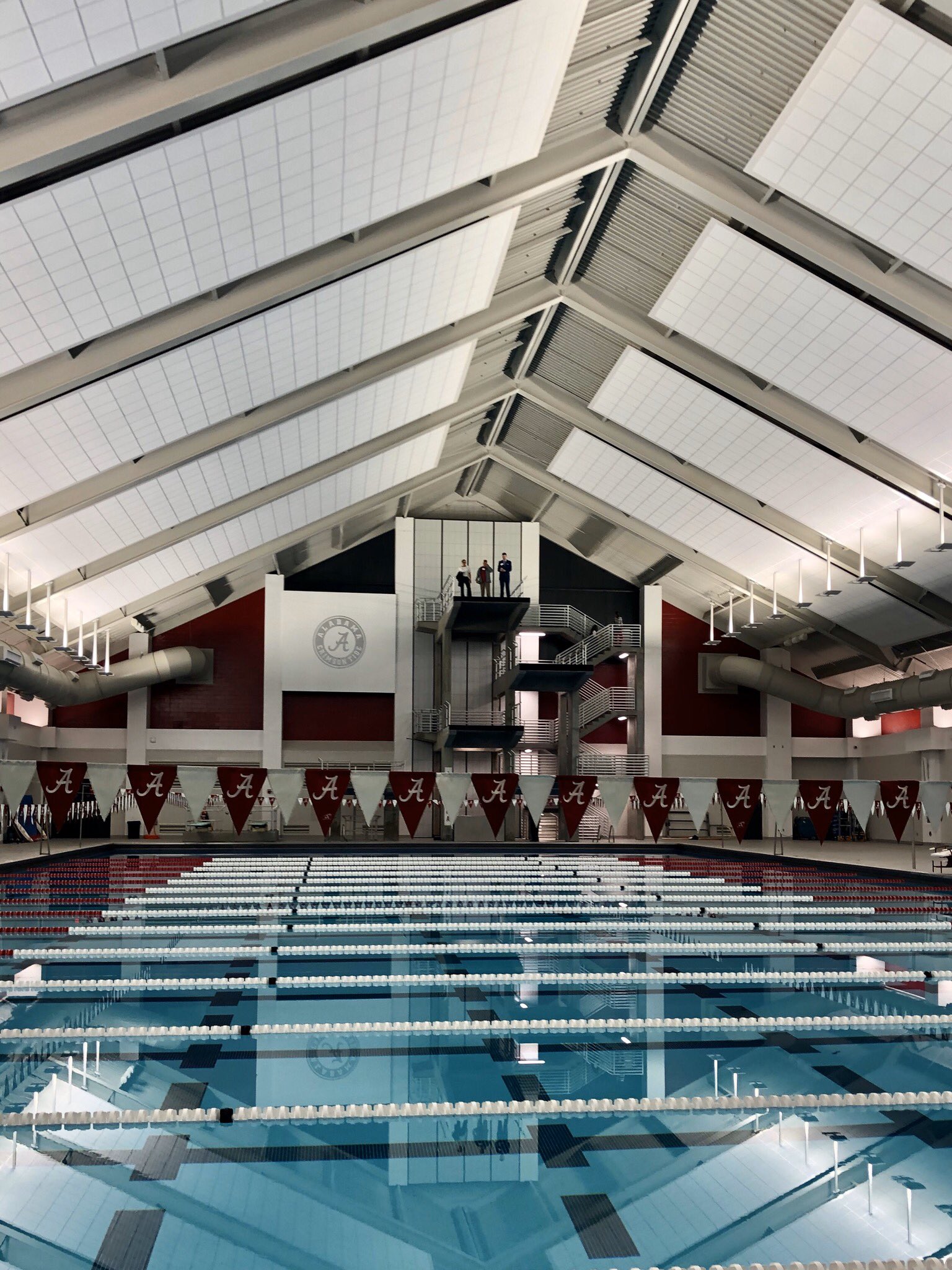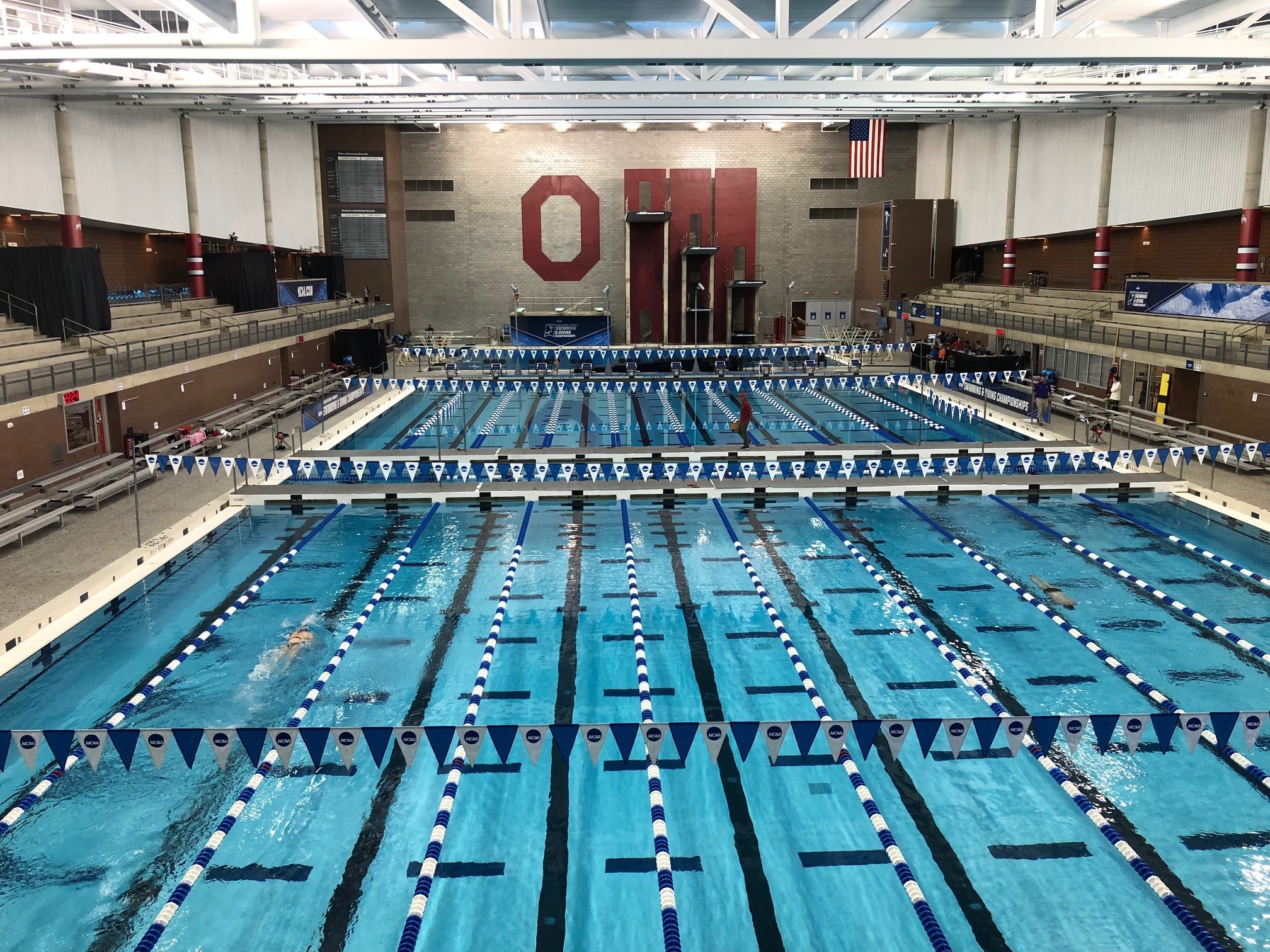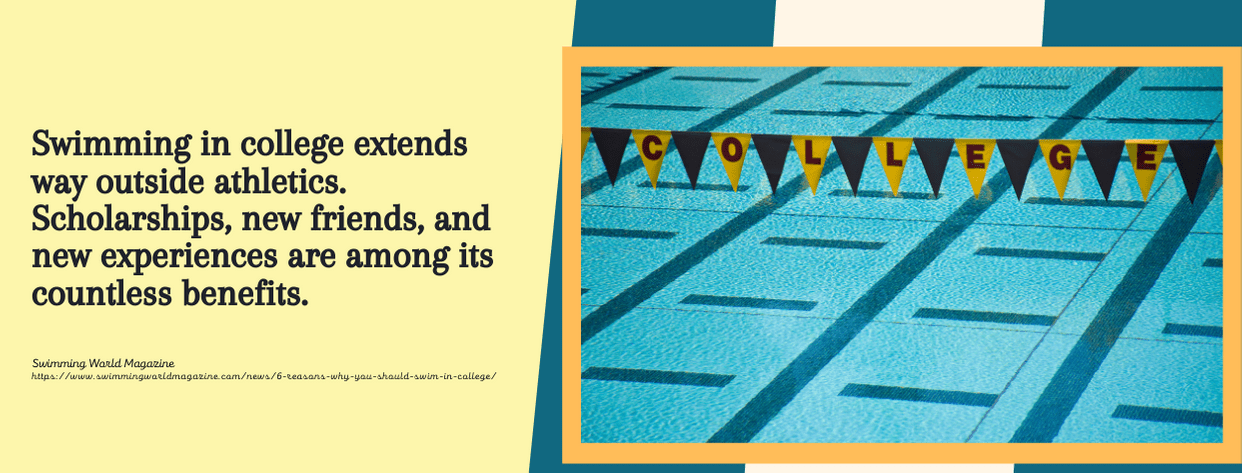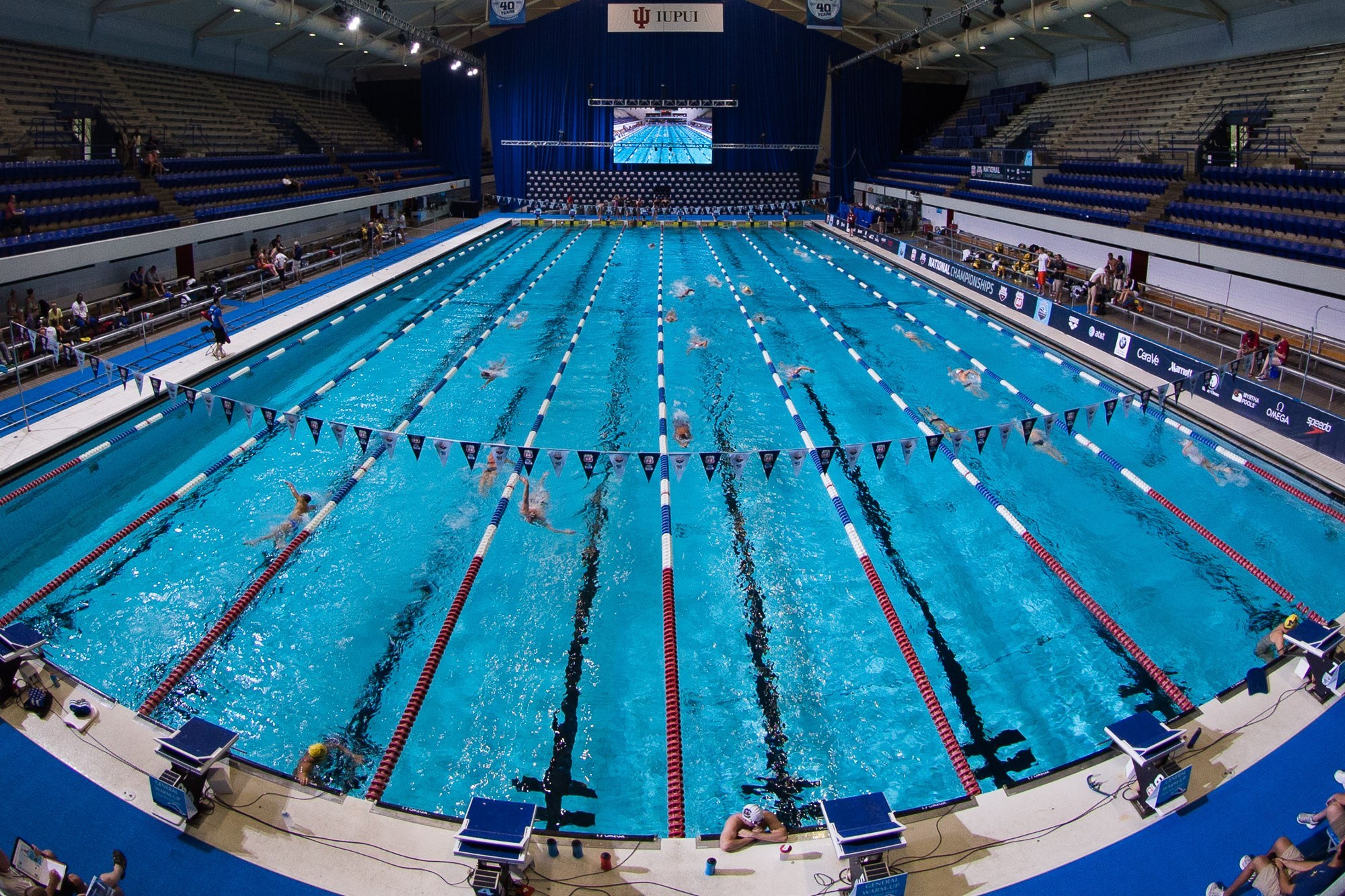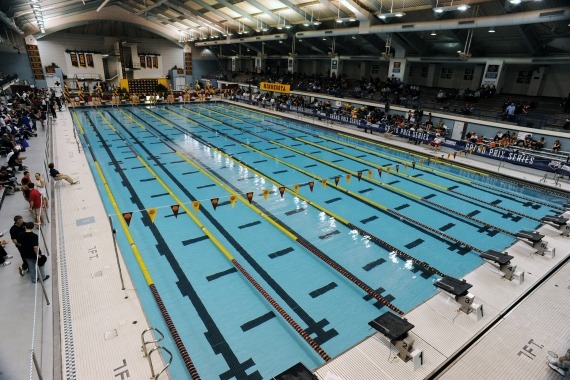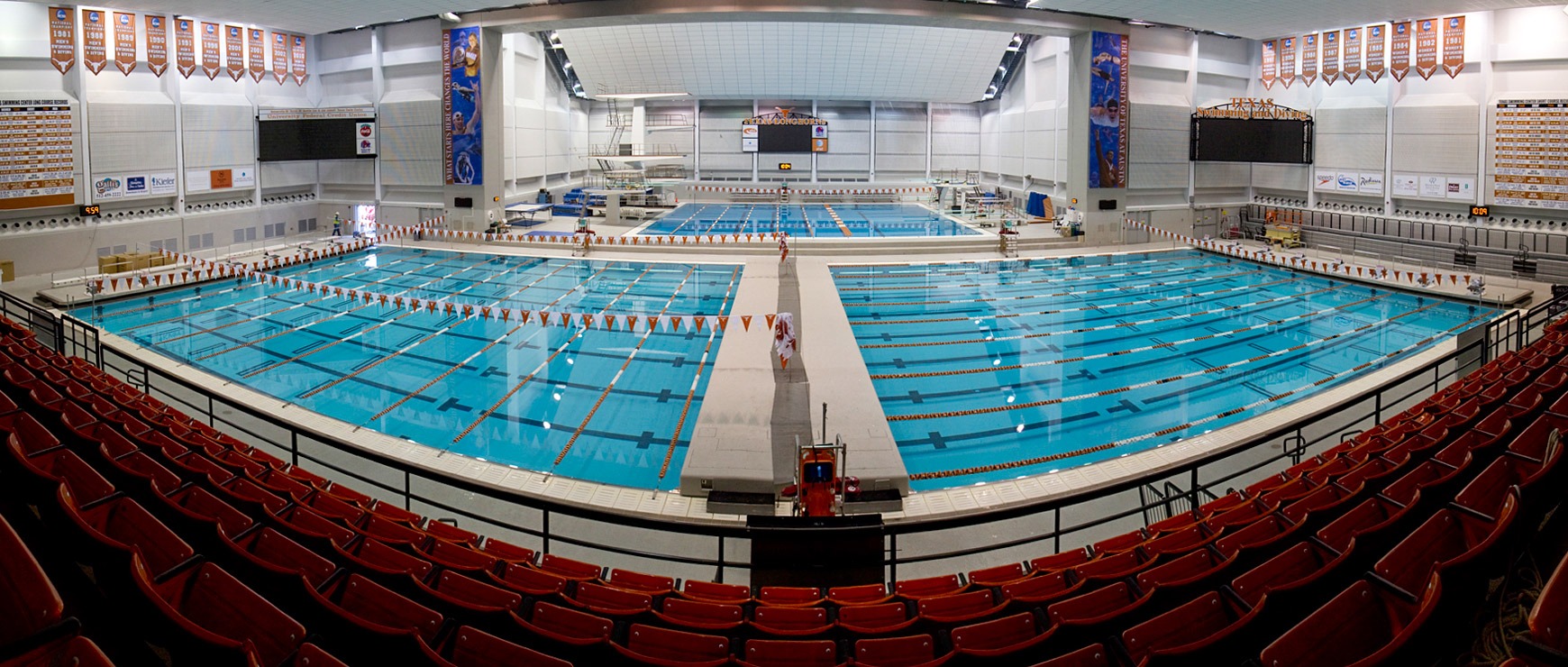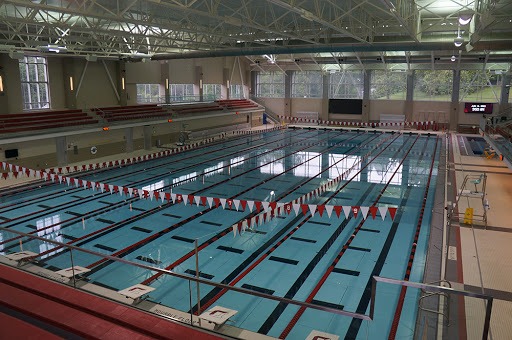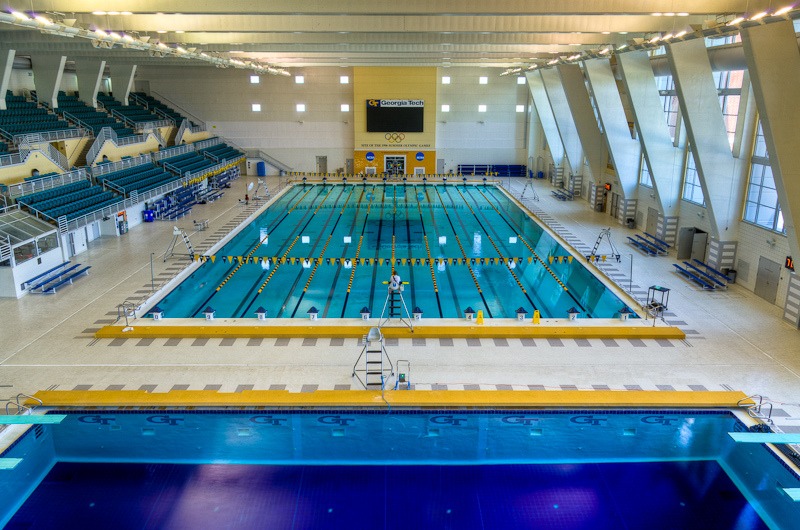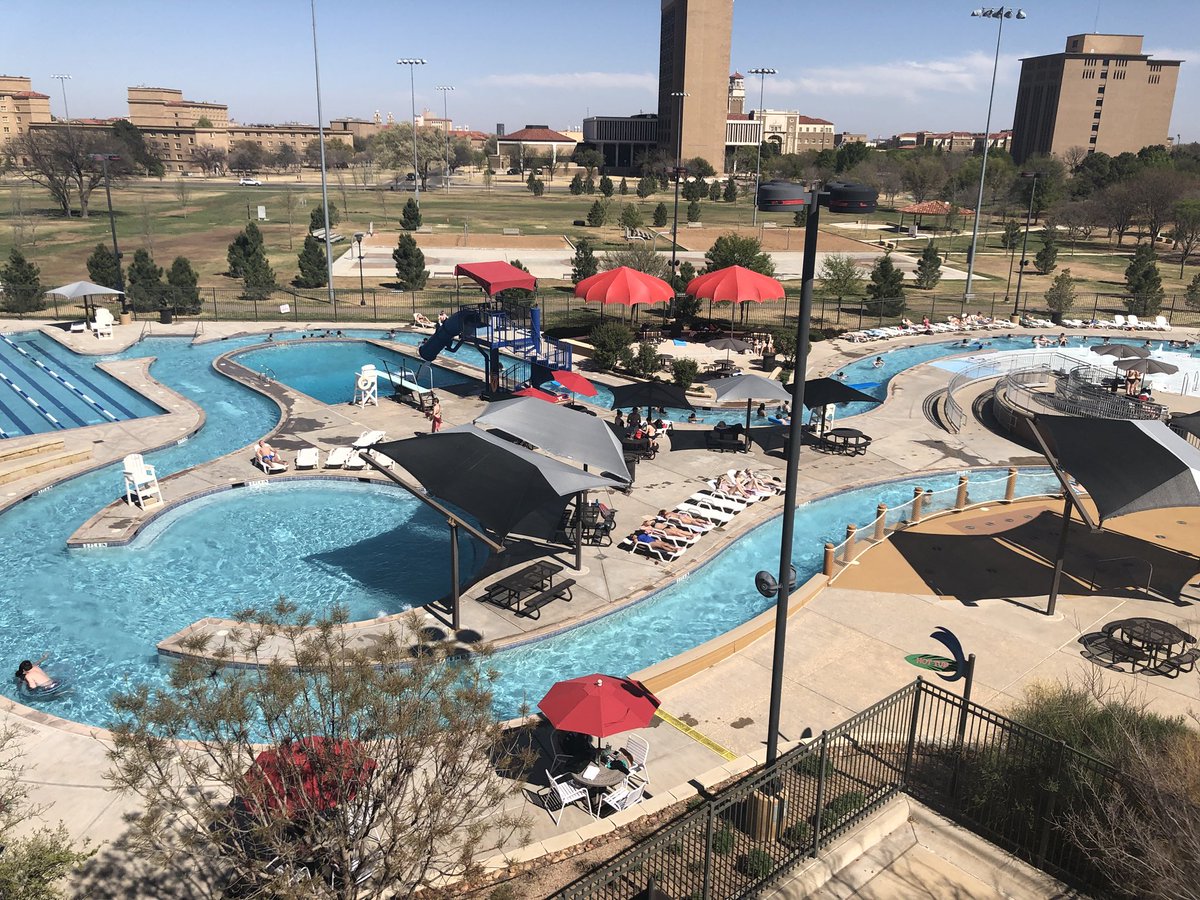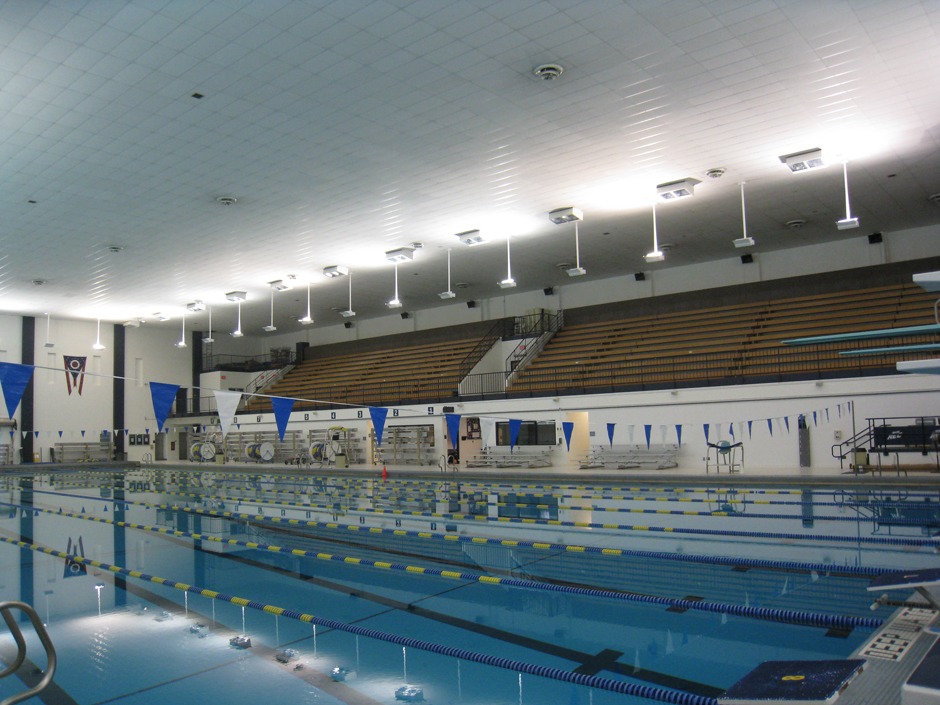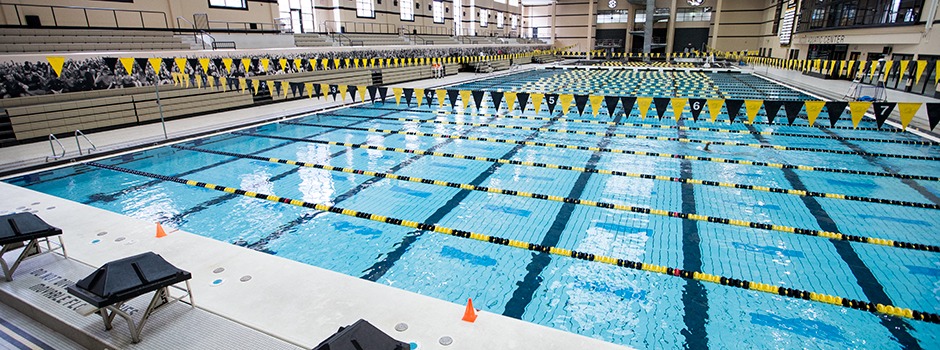Swimming is an essential life skill. People of all ages around the globe engage in the activity of swimming for various reasons. We dip in the pool for leisure, recreational, and socialization purposes or fight the summer heat. For the more physically active and athletic individuals, swimming is the mode of achieving their body and competition goals.
You do not only get to have fun while swimming; your body also thanks you for it. It helps to maintain your body weight, improves your breathing, and strengthens your muscles. Swimming also refreshes you, keeps you in a positive mood, and reduces stress. Studies also show swimming can help students retain more information!
No wonder colleges and universities construct multi-million dollar aquatic recreational centers. Swimming improves students’ lives while on campus. Swimming pools allow college students to have fun and socialize, relieve the stresses brought about by weeks-long exams, and train for swimming competitions to honor the school.
Aspiring high school swimmers who dream of competing in collegiate competitions—the National Association of Intercollegiate Athletics, the National Collegiate Athletic Association, and the National Junior College Athletic Association—get their dreams started in the best university pools. These pools are where multi-awarded swim teams also hold practices and tryouts for the country’s best swimming competitions and the Olympics!
Here’s a list of 20 college swimming pools with features that stand out from all the rest:
Louisiana State University and Agricultural & Mechanical College
Stanford University
Princeton University
University of Colorado in Boulder
University of Alabama
Yale University
Colorado State University
University of Georgia
Missouri State University
University of Alabama at Birmingham
Ohio State University
Indiana University – Purdue University – Indianapolis (IUPUI)
University of Minnesota
University of Texas at Austin
Denison University
Georgia Tech
Texas Tech University
University of Akron
University of Missouri
Louisiana State University and Agricultural & Mechanical College
Baton Rouge, Louisiana
Nothing screams school spirit like a university pool that spells “L-S-U.” The University’s $85 million outdoor leisure pools and indoor lap lanes will convince you to enroll with them. The L-S-U-spelled leisure lazy river is 3½ feet deep and has submerged lounge chairs in it. They also have a pool with an actual basketball court in it, giant water trampolines, and water logs. An indoor 25-yard pool with eight lanes is also open for recreational purposes. The University has given a new meaning to recreational fun.
For the LSU Tigers, the LSU Natatorium is their home. They have been training in the 50-meter indoor pool divided into two for the past 26 seasons. They also have a five to 10-meter platform with one and three-meter diving boards. The 1999 NCAA Regional Diving Championships, the 1987 U.S. Diving National Championships, the 1987 NCAA Diving Regional, the 1986 Men’s Southeastern Conference Championships, and the 1985 National Sports Festival were all hosted by LSU and held at the Natatorium.
They take training and fun seriously at Louisiana State University, as evidenced by their swimming facilities, which can fully cater to every individual’s need for physical activity and is a venue for wholesome fun and relaxation.
Stanford University
Stanford, California
Being a member of the United Masters Swim, a non-profit national organization, Stanford University built the Avery Aquatic Center, which is considered one of the finest swimming and diving facilities in the country. It is the exclusive home to the Stanford Cardinal but more so for the Stanford Masters Swimming. It has hosted dozens of collegiate swimming, synchronized swimming, diving, and water polo competitions.
The facility houses four swimming pools, and the main attraction is the 37 x 20-meter Avery Competition Pool—one of the nation’s fastest pools at 11 to 14 feet deep. The Maas Diving Center can be found outdoor and has a platform dive tower with springboards measuring 1, 3, 5, 7.5, and 10 meters. The Belardi Pool and the Baker Pool, on the other hand, are used for 50-meter laps training by the Cardinals. Both pools have varying depths, with 11 feet as Belardi’s deepest, while Baker is only 8 1/2 feet.
The Stanford Aquatics is open for recreational swimming, and they also offer private swim lessons and other special programs.
Princeton University
Princeton, New Jersey
The Denunzio Pool, located at the Jadwin Gymnasium of the university, is one of the country’s few fastest pools. It has a depth of 9 to 17 feet, 50 meters by 25 yards, and a 10-meter dive tower with springboards at varying heights. Its movable bulkheads allow the modification of the pool for every training need. The Denunzio Pool can surely accommodate every athlete.
It has been a venue for a lot of aquatic competitions like the EISL Championships, Ivy League Championships, ECAC Water Polo Championships, NCAA Diving Zones, the 2009 NCAA Water Polo Championships, the 2014 Special Olympics USA Games, and the 2004 exhibition between the U.S. National Team and the school’s women water polo team before the Olympics. With its new sound system and LED video and scoreboard, it will surely be hosting plenty more events in the future.
Aside from serving as a training facility for the Princeton Tigers, it has been used as well by Olympic gold medalists as their training home. They also offer different programs like youth, adult swim lessons, Water Safety and Lifeguard Training, and American Red Cross Certification courses.
University of Colorado in Boulder
Boulder, Colorado
The University’s recreation center is LEED (Leadership in Energy and Environmental Design) Platinum certified. That’s as green as it gets. It is an advocate for sustainability and has introduced net-zero water. Excess heat from other facilities and energy produced by the downhill water movement is never put to waste as they are used again to warm the three indoor pools and the outdoor pool.
The Clare Pool is open to lap swimming with its 25-yard long four lanes and can be rented out by groups. The Competition Pool is twice as wide as the Clare Pool, and the water temperature is maintained at 81 degrees. The Dive Well, which is 14-feet deep, has three diving boards, two meters, while the other one is three meters long. The diving club can only use the latter, and non-members must be approved before using the diving board.
The main attraction, however, is the Outdoor Buff Pool and Patio. This buffalo-shaped pool was patterned after the school mascot. The students can play water basketball and volleyball or relax and enjoy the jetted area or sunbathe.
How will you enjoy all these pools if you do not know how to swim? C.U. Boulder offers Adult Swim Lessons for experience levels 1 to 3.
The CU Swimming and Diving Team, a student-organized sports club, welcomes all C.U. Boulder swimmers regardless of experience, ability level, or goal. They have five-day practices every week which you can choose to attend or not. They host this in preparation for competitive meets throughout the year. You can even get to come with the team on Training Trips to different states.
University of Alabama
Tuscaloosa, Alabama
Home to the Crimson Tide – Alabama’s Swimming and Diving Team, the University’s training facilities are considered one of the best countries. The Alabama Aquatic Center can be found at 415 Bryant Dr., Tuscaloosa, AL 35401. Its recent renovation cost more than $20 million, which was worth it.
It now boasts an outdoor pool, which is 25-yard by 25-meter with one and three-meter long springboards. A training room with hot and cold therapy tubs was also added to the Don Gambril Olympic Pool. The diving area is now equipped with up to 10-meter platforms allowing a more advanced level of training. These facilities host competitions on the national level and the U.S. Open, but it has also witnessed several world records. It has already passed the requisites for an Olympic pool. Who knows, the next one might just be held here at the University of Alabama.
The whole U.A. Community can also make use of and benefit from these facilities. Aside from the regular swim lessons, the University Recreation also offers lifeguard training complete with CPR and First Aid courses. It is likewise open to students who simply want to relax and unwind after being drained in classes.
Yale University
New Haven, Connecticut 06520
If you have been to the Kiphuth Memorial Exhibition Pool at the Payne Whitney Gymnasium of the university, you most probably have seen the window at the pool’s deep end. They call it the coaching window, but it was initially installed for the underwater shoot of a television special featuring the swimming history, which featured the famous swimmer Esther Williams.
The six-lane 25-yard pool was named after its former athletic director and swimming coach. The facility was developed in a way that it can host collegiate swimming competitions. The most memorable event held in this aquatic facility is the double-dual meet between Yale, Harvard, and Princeton. Other swimming competitions hosted here include the AAU and the NCAA Championships.
The university’s Practice Pool located on the third floor of the gym holds 330,000 gallons of water and is dubbed as the “World’s Largest Suspended Natatorium.” The 50-meter pool can be modified as a 25-yard or 25-meter course through its movable bulkhead.
The Yale Bulldogs Swimming Team uses the Both the Kiphuth Memorial Exhibition Pool and the practice pool for training. All Yale students use them too for recreation purposes.
Colorado State University
Fort Collins, Colorado
All swimmers, divers, and water polo athletes train at the Moby Pool. This 25-yard pool consists of six lanes and two diving boards. The CSU Rams compete with other swim teams from different universities and colleges across the U.S. Amy Van Dyken, a four-time Olympic gold medallist, was a CSU Ram. He trained and competed in this very same pool.
The recreation pool features a zero depth-entry as if you are on the beach, sprayers, and a current channel on the lazy river, which can be used for relaxingly floating around the pool or swimming against it for a more challenging resistance swim. The natatorium has a 25-yard, 4-lane pool where you can do lap swimming.
However, swimming is not the only activity you can do in the natatorium. You can engage in other fun water activities are water basketball, water volleyball, and wall climbing at the 12-foot wall right at the deep end of the pool with a waterfall. After dipping in the pool, you can also get to relax in the 35-person spa, sauna, and steam room.
Colorado State University is an advocate for the environment and observes sustainable practices. They see to it that water and energy are conserved at the maximum level. They use regenerative pool filters, low-emitting materials, and energy-efficient gym lights.
University of Georgia
Athens, Georgia
You can find the Gabrielsen Natatorium at the Ramsey Center. It was named after the “Shrewd Norwegian” coach of the Georgia Bulldogs Swim Club when they have set a dual meet record, won one NCAA Championship, and three conference team championships. He was also the head coach when the University of Georgia produced its first U.S. Olympiad and 70 SEC championship winners.
Gabrielsen Natatorium was the venue where the U.S. Diving held the trial for the 1997 World Championship Team. It also hosted numerous national competitions like 1997, 2004, and 2010 SEC Championships, the 1999 and 2005 NCAA Women’s Championships, and the 2002 NCAA Men’s Championships.
There are three separate pools in the natatorium – the competition pool, the diving pool, and the instructional and recreational pool. The competition pool, which is 50 meters long, can be reconfigured in four different ways by moving its bulkhead allowing for a short and long lap swim. The diving pool goes deep as 17 feet and is equipped with a diving platform with springboards attached at varying heights. It is very diver-friendly as it has an installed air sparger system. The instructional and recreational pool is a 25-yard, 8-lane pool with a depth of 3.5 feet at both ends and 5 feet at the center.
The UGA Swimming and Diving Team is considered one of the country’s elite programs producing more than eight participants in the 2016 Olympics.
Missouri State University
Springfield, Missouri
MSU does not only give importance to the athletics aspect of their students but also their general well-being. Aside from being a venue for training for the Missouri State Bears and Lady Bears and national competitions, the facility features underwater benches around the pool that have hydrotherapy jets which serve as a back massage, zip line, 25-yard lap swimming lane with color-changing LED lights, and a 100-foot projection screen for film viewing while dipping in the pool.
They offer numerous water and fun fitness programs like paddleboard classes and log rolling nights in the 7,000-square foot pool, which can accommodate up to 450 people. That’s how huge it is.
There is also a sauna and a spa that can seat 16 people near the pool area. The current in the lazy river both serve resistance swimmers and relaxing students with its 85-degree water temperature.
The 11,286 square feet Foster Recreation and Aquatics Center are for the non-disabled and those with disabilities. The staff on duty can offer assistance to all pool-goers. The pool can be accessed through its zero-depth entry complete with handrails. It also has a safe and secure water wheelchair with a seatbelt and harness. The different levels of the facility can be accessed by an elevator.
Recommended Schools
University of Alabama at Birmingham
Birmingham, Alabama
The UAB University Recreation (URec) is the university’s center of fitness, wellness, and recreational opportunities. It is a safe place for UAB students, the community, and beyond to explore fun programs and take advantage of quality services and state-of-the-art facilities.
Since May 1, 2005, the Campus Recreation Center has served as a haven to students and her members. You stay active and fit in a safe and clean environment. The over 150,000 square feet recreation center is a two-story facility housing basketball and volleyball courts, a fitness center, meeting rooms, an indoor 36-foot high climbing and bouldering wall, a center court, racquetball and squash courts, and an indoor track.
The UAB’s Aquatics Center is the breeding ground of champion divers and swimmers. It is home to The University of Alabama’s Swimming and Diving team, where they get to train their skills in a 50-meter Olympic pool complete with diving platforms. The Aquatics Center features an outdoor 25 yard by 25 meters, fully equipped with heating and cooling systems. The swimming and diving team can train and enjoy the water with a pool temperature comfort regardless of year.
It also serves as a Swim School, offering an American Red Cross based curriculum designed for all ages six months to adult. At UAB Swim School, water safety is a top priority. Swim instructors teach participants proper techniques so they can easily transition to having lifelong swimming skills.
Ohio State University
Columbus, Ohio
Inside Ohio State University are a state-of-the-art competition pool and diving wells, known as one of the country’s finest. It stands in the heart of the campus and alongside three other world-class campus facilities – the Thompson Library, Ohio Stadium, and the Recreation and Physical Activity Center. The Pavilion, aptly named the Bill and Mae McCorkle Aquatic Pavilion, was opened in 2005. It was named for Bill and Mae McCorkle, long-time supporters of the OSU’s swimming programs.
The Bill and Mae McCorkle Aquatic Pavilion consists of the Mike Peppe Natatorium and the Ron O’Brien Diving Well and is a part of OSU’s new Recreation and Physical Activity Center (RPAC).
It Pavilion holds nearly 1.56 million gallons of water. It is equipped with the latest technology where OSU’s varsity men’s and women’s swimming and diving teams train and achieve their record-breaking time. The 50-meter competitive pool is specially designed to allow water to remain flat and smooth at 79 degrees Fahrenheit. The temperature control feature extends to the width of the lanes, deep gutters, and its depth. The diving well maintains a temperature of 83 degrees Fahrenheit. There is no question why, according to Columbus Dispatch, the Pavilion is “Built for Speed.”
The facility has a spectator seating capacity for 1,750, and an on-deck seating for 1,300, the perfect venue for large-scale swimming and diving competitions. Not only that, the Pavilion extends its amenities for the use of the public. OSU, through the McCorkle Aquatic Pavilion, offers swim lessons, lifeguarding, and scuba lessons to the public.
Indiana University – Purdue University – Indianapolis (IUPUI)
Indianapolis, Indiana
Indiana University – Purdue University in Indianapolis (IUPUI) is the proud home of the only Division I college sports program in downtown Indianapolis. In 2017, IUPUI Jaguars joined the NCAA’s Horizon League. The league is a Division I athletic conference comprising ten member institutions. The Jaguars faced their competition in 18 sporting events with ferocious determination and ready to enter the new era of victory for IUPUI Athletics.
The IUPUI Athletics lives by the mantra “Recruit… Retain… Graduate Champions!” and rightfully so because of the first-rate athletics program that all student-athletes get to experience on-campus. Student-athletes or the IUPUI Jaguars are always ready to make some noise in the sports arena. They excel in basketball, cross country, golf, track and field, soccer, tennis, and of course, swimming and diving.
IUPUI Jaguars become champions because they get to train like one. The student-athletes train in world-class athletics facilities, including the 220,000square-foot facility that serves as the home of IUPUI men’s and women’s swimming and diving teams. The I.U. Natatorium holds an eight-lane, two 50-meter competition pool, 18-foot diving well, and a six-lane 50-meter instructional pool.
It is the largest permanent swimming competition facility in the country, hosting many significant swimming competitions since 1982. Having a seating capacity of 4,700 spectators makes it a perfect venue for large-scale swimming competitions. In fact, I.U. Natatorium’s swimming calendar is booked through 2025.
I.U. Natatorium is where over 100 swimming records and 18 world records were set, the 1987 Pan Am Games, and 13 U.S. Olympic Swimming and Diving Team Trials. Known as the “world’s fastest pool,” the Natatorium bore witness to the greatness of Greg Louganis, Michael Phelps, and Jenny Thompson.
University of Minnesota
Minneapolis, Minnesota
The University of Minnesota is always Driven to Discover from achieving excellence in academics, providing world-class education, research, outreach, innovation, and sports. There is no wonder why Gopher Athletics never fails to come home Big Time in the Big Ten League. There are over 675 Gopher student-athletes, and the university boasts that despite the intensity of their training, they maintain a 3.33+ GPA average. This is a first among public institutions in the United States.
It only fits that big-time student-athletes get to train in world-class athletic facilities. U.M. is especially proud of the Jean K. Freeman Aquatic Center, named after a beloved alumna and women’s swimming coach. The center is a 73,000 square feet facility nestled at the Recreation and Wellness Center and the MacNamara Alumni Center. An $11 million Freeman Aquatic Center was completed in 1990 and now houses the Dorothy L. Sheppard Pool.
The pool is designed with an 8-lane, 50-meter pool ranging from 7 feet to 7 feet and 10 inches in-depth and a movable bulkhead. Another remarkable design innovation is a separate 25-yard by 55-foot diving well that features a set of 1- and 3-meter springboards and 1-, 5-, 7.5- and 10-meter diving platforms. These give the Gophers swimming and diving team an all-access pass to a world-class aquatic facility.
Fashioned to accommodate every champion’s need, the facility is designed to meet or even exceed Olympic standards. With a 1,350 spectator and 1,2000 competitors capacity, it is a popular venue for many major swimming and diving events. Since it first opened, over five million people have experienced swimming at Freeman Aquatic Center. Olympians claim that it is one of the best pools in the country, if not the world.
University of Texas at Austin
Austin, Texas
You can find one of the country’s premier competitive aquatic facilities. The Lee and Joe Jamail Texas Swimming Center (TSC) sits at the heart of the University of Texas at Austin. Named after the benefactors Lee and Joe Jamail in 1993, it is considered one of the best swimming and diving facilities globally, if not the best. TSC serves as the training ground for the majority of Longhorn Aquatics programs.
With a 500,000-square feet indoor space, TSC is one of the largest fitness facilities in any college in the country. The center consists of a competition pool and a separate diving area known as the Skipping Browning Diving Facility. It was named in honor of David G. “Skippy” Browning, a 1953 graduate who took home the 1952 springboard Olympic gold medal and several national and collegiate diving titles. Simultaneously, the conference room is named in honor of Dr. Curtis J. “Shorty” Alderson. In 1931, he introduced swimming to the Southwest Conference and served as Longhorn swimming coach for many years.
Already considered one of the finest collegiate swimming centers, the Lee and Jamail Texas Swimming Center underwent a three-million-dollar renovation in 2001. It brought major upgrades in the facilities inside TSC. The 50-meter pool is now equipped with a newly-remodeled movable bulkhead as well as underwater windows.
After the renovations, the bulkhead is now made of 25,000 pounds of aluminum and is engineered to cater to any major swimming or diving events. The ceiling can be raised so that lane lengths can be changed for different events. With a high-tech sound booth, the entire complex gets theatre-quality speakers so that spectators and competitors can enjoy the thrill in every event or competition.
Modeled after the pool during the 1972 Olympic Games in Munich, there is no question that Lee and Joe Jamail Texas Swimming Center can accommodate competitive swimming at any level.
Denison University
Granville, Ohio
At Denison University, students are not only welcomed to a challenging curriculum in liberal arts and sciences, but they are also given valuable opportunities beyond the classroom. Academic achievement is lauded in D.U., but Co-curricular pursuits, especially in sports, are also encouraged. D.U. Student-athletes participate in intercollegiate sports, consistently excelling competitively on the conference and national levels while maintaining their academic performance.
Athletic teams at D.U. Follow a rigid training schedule. The university’s winning heritage drives student-athletes to win. But this is only part of the game. What makes them fully prepared for every game is the preparation that goes into training to win. The 10-team North Coast Athletics Conference was formed in 1984. Since then, Denison Athletics has won 17 All-Sports trophies and a total of 151 total conference championships.
Denison Big Red swimming and diving team get to train in the spectacular Trumbull Aquatics Center since 2012. It is a $20 million facility and is considered one of the country’s most advanced aquatic facilities. Trumbull Aquatics Center is named in honor of Scott and Margy Trumbull, who generously supported the aquatics center’s construction and development.
It features a 50-meter long, 25-yard wide competition pool, a diving well, and a spectator capacity of more than 750 people. The Trumbull Aquatics Center is equipped with a state-of-the-art timing and scoring system, a high definition sound system, two full-color video boards, and a whirlpool spa just across the diving well. Plus, the administration and media coverage room make it a perfect venue for swimming and diving events. In fact, the Trumbull Aquatics Center hosted the North Coast Athletic Conference Championships since 2014 and the NCAA Division III Diving Regional for three years.
On top of all that, the aquatics center is open to the public for swimming and space for recreational activities.
Georgia Tech
Atlanta, Georgia
The Georgia Tech Swimming and Diving Team train for competitive swimming and relax at the Campus Recreation Complex (CRC). A premier recreation, intramural fields leadership challenge course, an aquatic center that serves as a home to the Georgia Tech women’s and men’s swimming and diving team. It is a 300,659 square foot facility that stands on the West side of the campus along the Ferst Drive. The CRC is a significant expansion to an already existing world-class swimming and diving venue.
There are two world-class aquatic facilities in the CRC – one dedicated for competitive swimming and the other for leisure play. Established in 1996 for the Olympic Games, the McAuley Aquatic Center is deemed one of the fastest competition pools globally.
Previously known as the Georgia Tech Aquatic Center (GTAC), it was officially named McAuley Aquatic Center in 2016. It features a 50-meter ten lanes competition pool that served as the venue for past Olympic trials and several major swimming and diving competitions. Of course, this move was in honor of James Herbert “Herb” McAuley, a former swimming champion and a devoted coach of the Yellow Jacket swimming and diving team. While McAuley was coach, he imposed the infamous compulsory “drown-proofing” class for swimmers and undergraduates, without exemptions.
You can also find the Vernon D. and Helen D. Crawford Pool in the complex. It features a six-25 yard lanes leisure pool, a 184′ water slide, a lazy river, a free play area for children of all ages, a 16-person spa, and an outdoor patio with massive lounge furniture. The pool is a perfect venue for recreational activities.
Texas Tech University
Lubbock, Texas
Texas Tech University (TTU) is not only known for its intensive research program. The university also provides an equally competitive athletics program. It only fits that TTU students get to experience an engineering genius in its aquatic recreation center – a Texas-sized aquatic facility for the whole community to enjoy. Completed in May of 2009, the Texas Tech Student Leisure Pool is the most extensive pool on a country’s college campus.
Students have the luxury of choosing to lounge in a 645-foot long lazy river, a 25-person hot tub, or the cascading water wet deck. What makes the wet deck unique is that it offers an immersive experience with its partially submerged lounge chair. However, for the more athletic, they are welcome to dive from a 10-foot drop slide, complete laps in the 8-lane lap pool, or play water sports in the 4-lane free play and fitness pool.
Since 2009 when the Texas Tech Leisure Pool opened, it has attracted more than 70,000 visitors. The Leisure Pool and the Aquatic Center Lap Pool are among the greatest achievements of the university’s Recreational Sports, especially for the Aquatics programs.
TTU proudly offers adult swim programs, lifeguarding classes, and American Red Cross Learn-to-Swim Program for youth learners. While emphasizing water safety, the fundamentals of swimming, diving, and other water sports and activities, the aquatics center remains a welcoming space for everyone. Because it is the largest aquatics center in the country, there is plenty of room for students and the Texas community.
University of Akron
Akron, Ohio
Akron University is where students and student-athletes invent their future. Home to the Akron Zips, the university’s Athletics Department offers promising opportunities to every student-athlete. The university invests in developing world-class athletics facilities for Akron Zips to train and become the best student-athletes in their division.
The Akron Zips Swimming and Diving team get to train in a massive 64,000-square foot, $6.5-million aquatics facility. Named in honor of the late Oliver J. Ocasek, the Oliver J. Ocasek Natatorium has been the home of the university’s swimming and diving program. Inside the natatorium is a 50-meter Olympic-sized pool, locker rooms, as well as an observation deck that can accommodate 1,000 spectators. What is unique about the Ocasek Natatorium is the nine handball or racquetball courts and two weight rooms inside. Athletes and coaches can train without limits.
The 835,000-gallon pool has eight racing lanes making it ideal for major swimming competitions. It is equipped with moveable dividers, 3-meter by 5-meter platforms, with two 1-meter and 3-meter springboards.
Since it opened in January of 1988, it has become the center of excellence for the Women’s Swimming and Diving Team. Ocasek Natatorium witnessed the first home meet against Ball State on October 31, 1998. Today, it welcomes many swimmers and divers from the Akron Rippers diving club, Western Reserve Seariders (WRS) swimming, Cuyahoga Falls Tiger Sharks swimming to the Cleveland Lancers swimming.
University of Missouri
Columbia, Missouri
Best known to dominate the Southeastern Athletic Conference in 15 sports, the University of Missouri’s Mizzou Tigers get to top-shape because they train in world-class athletics facilities. U.M. invests in sports programs that MizzouRec pursues to provide quality leisure experience to all Mizzou students, members, and the entire community. MizzouRec Services and Facilities are award-winning facilities that gain national recognition. They bring the Mizzou community and guests together in a safe environment that promotes a healthy and active lifestyle through maximum participation.
Mizzou has three facilities: Indoor Facilities, Outdoor Facilities, and the Mizzou Aquatic Center. One of the top aquatics facilities in the United States, the Mizzou Aquatic Center, opened its doors in 2005 for recreation and competitive swimming and diving. Inside the center are four pools – the 50M Pool, Diving Well, Tiger Grotto, and the Truman Pond.
The 50-meter pool is among the best competition pools in the country. It is equipped with kickboards, pull-buoys, and aqua jogging belts that are open to all MizzouRec members to use. Inside the Mizzou Aquatic Center, lap swim etiquette is highly encouraged. This emphasizes the following: Respect, Be Considerate, Lane Choice and Pacing, Entry, Circle Swim and Share, and Lane Lines. These are the etiquette of a good swimmer and an accommodating and considerate peer in the pool.
Next is the Diving Well, which is attached to the pool, feature a 10-meter platform and four springboards perfect for the training of diving athletes. Both the 50M Pool and the Diving Well are equipped with U.D. disinfection systems and proper air ventilation for better air and water quality.
After intense training or workout, the Tiger Grotto is a perfect place to go to. It is a resort-quality aquatic facility inside the Mizzou campus. Transform any ordinary day into a spa day with the zero-depth pool entry, a lazy river pool and waterfall, hot tub, steam room, and sauna. It is a perfect recreational spot tucked inside the Mizzou Aquatic Center.
For those who love the beach, the Truman Pond is for you. It is an on-campus beach club where Mizzou members can indulge. When the weather permits, it opens mid-April, just in time for the summer.
